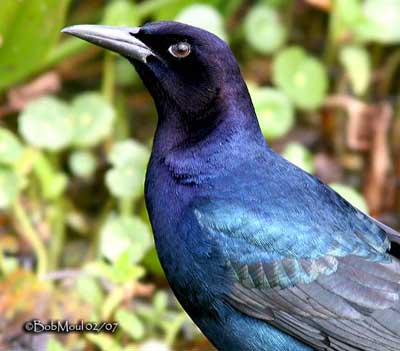
FAMILY ICTERIDAE
Blackbirds, caciques, oropendolas, orioles, troupials, grackles, meadowlarks, cowbirds, Bobolink
The Family Icteridae belongs to the Order Passeriformes, and includes about one hundred species.
Icterids are found only in the New World, in the three Americas.
The members of this family are small to medium-sized birds. Their plumage is mainly black with conspicuous metallic sheen.


Numerous species show boldly contrasting areas of bright colours such as yellow, red, orange, chestnut, buff or brown.
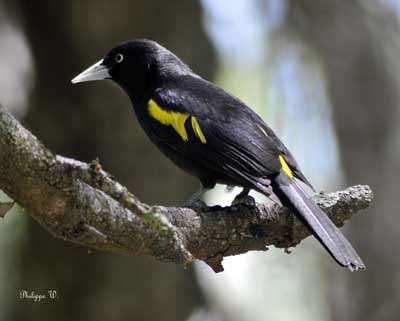
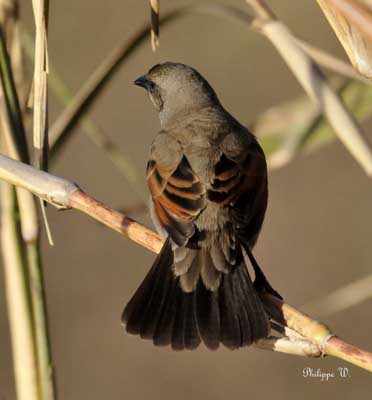
Baywing
Sexual dimorphism is important, first by the size between sexes, and then by the plumage, especially in migratory species of the temperate regions and in the polygamous species.

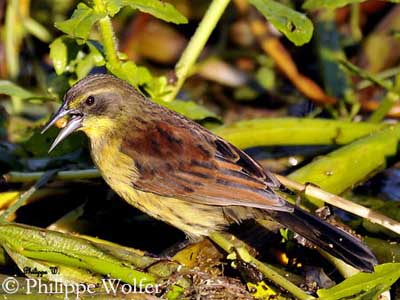
The monogamous species show very little difference between sexes, and both male and female often have bright coloured plumage, with female slightly duller than male.
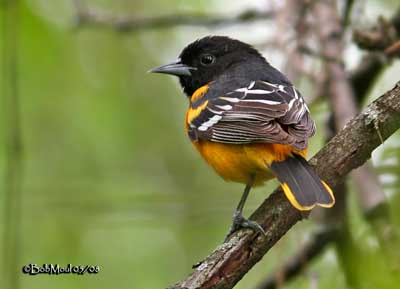
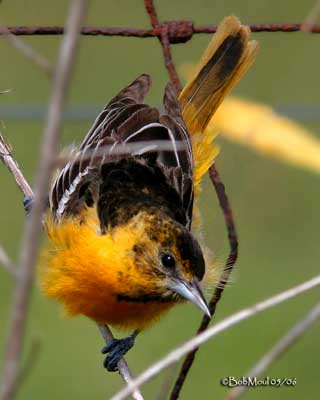
Some species have pale eyes, from white to pale blue in caciques and oropendolas. Both groups also have peculiar bills, very broad at base, fairly long and pointed.
Caciques, genus “Cacicus”, have white to yellowish-white bills, whereas oropendolas, genus “Psarocolius”, show more coloured beak, from creamy-white to pale yellow, black in some birds, or two tones (blackish with yellow or red tip) in others.
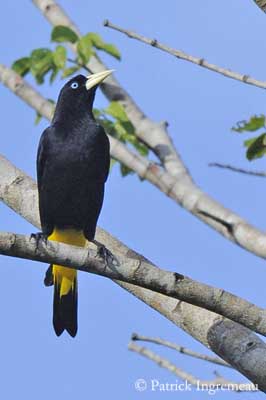
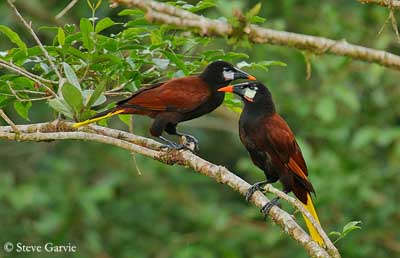
Montezuma Oropendola
Some oropendola’s species have an elongated bill extending to the forehead, as a frontal plate.
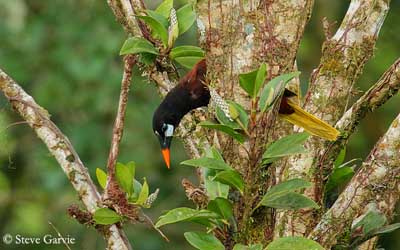
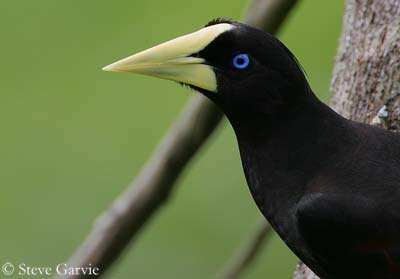
They usually have long tail contrasting in colour with the black body.
Orioles, genus “Icterus”, are different in colours, with yellow, orange and olive plumage contrasting with black parts. All the birds of this group are brightly coloured, some of them with conspicuous white wing bars. The wings are pointed and the long tail is rounded at tip.
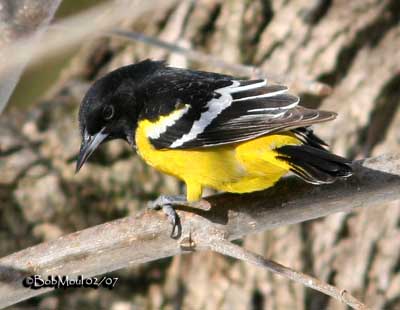
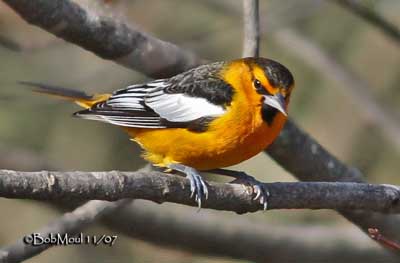
Male and female may be almost similar, but usually, females are duller and smaller.
They have dark brown to black eyes. The bill is straight and pointed, often with pale blue patch at base of lower mandible, but some birds show a slightly downcurved bill.
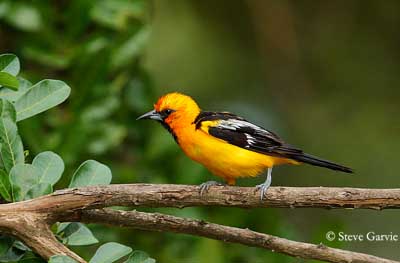
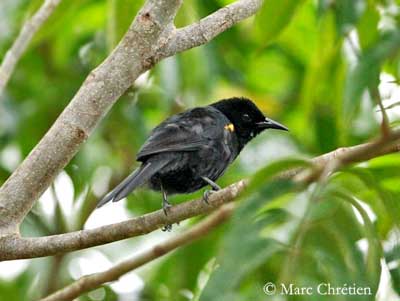
Epaulet Oriole
Streak-backed Oriole
Troupials are larger, with longer tail, pale eyes surrounded by conspicuous bare eye-ring, and straight, pointed bill with pale patch at base of lower mandible. The Oriole Blackbird (Gymnomystax mexicanus) has black eyes with broad blackish eye-ring and black bill.
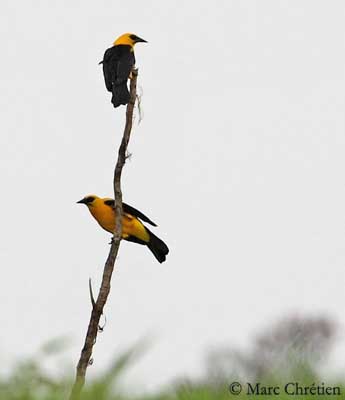
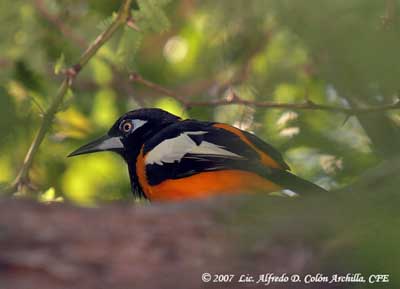
Oriole Blackbird
Venezuelan Troupial
The blackbird’s group of genus “Agelaius” gathers smaller birds. Males have mostly black plumage with bright coloured patches on scapulars.
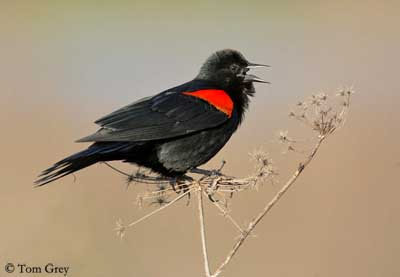
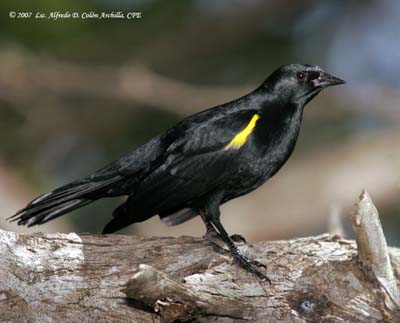
Other species have contrasting head as in the Yellow-hooded Blackbird (Chrysomus icterocephalus, previously Agelaius) which has yellow head and neck and black body, and in the Chestnut-capped Blackbird (Chrysomus ruficapillus, previously Agelaius) which has chestnut head and bib with black body. They usually have black eyes and blackish pointed bill.
Females are browner, often with more streaked plumage and cryptic colours.
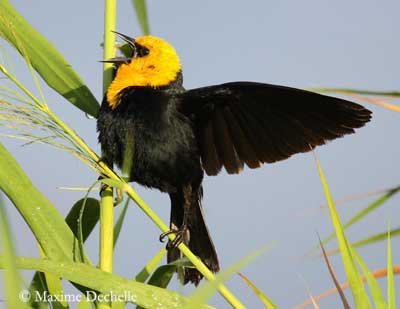
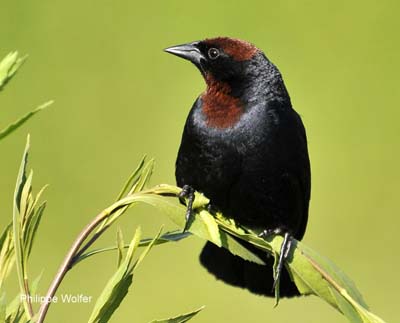
The birds of genus “Sturnella” have black plumage with red or yellow throat and breast. The meadowlarks with yellow underparts usually show a broad black collar on the breast.
All have straight, pointed bill, from black to greyish, with paler lower mandible.
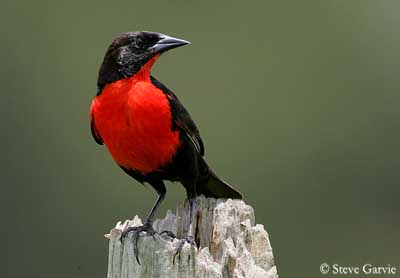
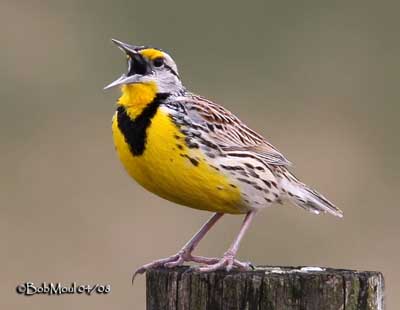
Eastern Meadowlark
Only member of the genus “Dolichonyx”, the Bobolink (Dolichonyx oryzivorus) is a small bird, with different pattern plumage and softer colours. (See the card for more information).
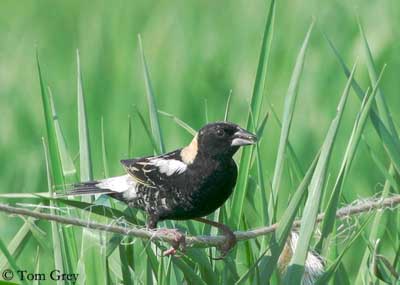
The grackles, genus “Quiscalus”, have black plumage overall with metallic sheen and white eyes. Several birds have long rounded tail. The bill is fairly long and pointed, usually black. Female are browner.
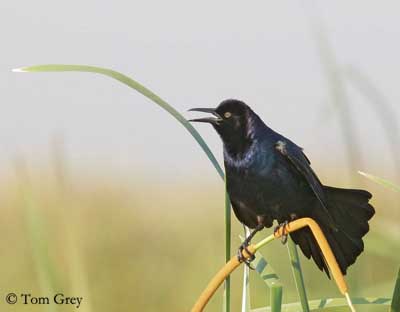
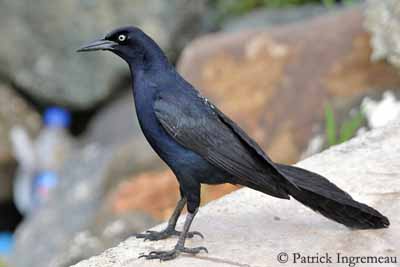
The cowbirds, genus “Molothrus”, are small to medium-sized bird. Males have black plumage with metallic sheen, black, pointed bill and black or red eyes. Female are duller than males.
Most of them are parasitic species.
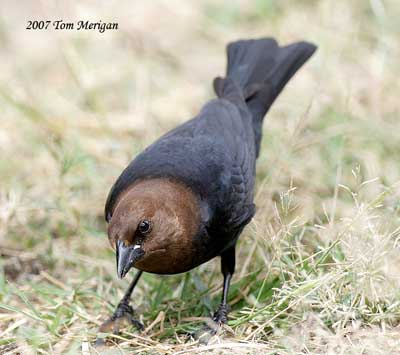
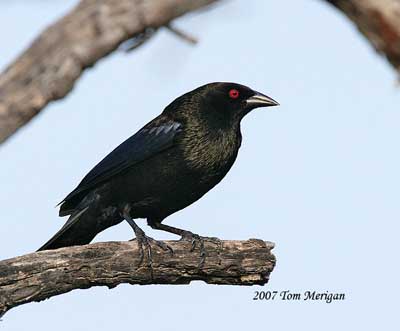
All species have stout legs and feet.
Icterids occur in a wide variety of habitats such as forests and woodlands, shrublands, grasslands and marshlands, according to the season.
Usually, blackbirds, cowbirds, grackles and Bobolink are found in open country, cultivated areas and reedbeds where they feed on invertebrates and seeds. They are mostly terrestrial. We can see them on the ground walking or running with slightly cooked tail, but they do not hop.
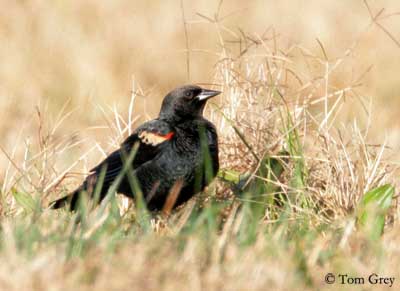
Orioles, caciques and oropendolas frequent mainly wooded areas and are mostly arboreal. They feed primarily on insects, but they also may consume fruits and nectar from flowers.
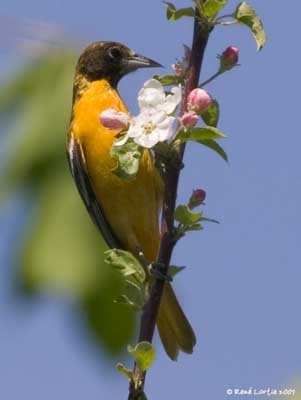
The members of the Family Icteridae utter rather harsh and unmusical, loud and distinctive songs, (orioles are an exception with some clear whistles).
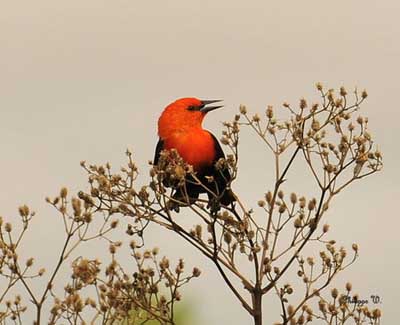
These birds may perform elaborate displays at the beginning of the breeding season and all year round according to the situations.
The common Red-winged Blackbird (Agelaius phoeniceus) performs the “song-spread” display, singing while puffing out its plumage in order to expose the bright red scapular patches. At this moment, other males know that this territory is established and defended.

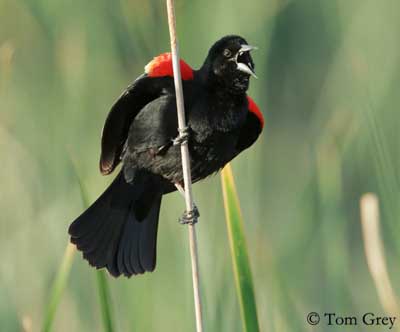
The birds of genus “Agelaius” blackbirds, cowbirds, grackles between other Icterids perform this type of displays.
They also perform chases and pursuit flights between mates.
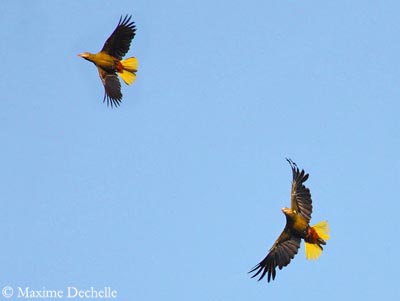
However, caciques, oropendolas and orioles have different postures.
Oropendola males perform the “bow” display, and mainly the dominant male. The bird bows down, with the bill pointed downwards, raised wings and cooked tail. The male utters its song while the tail is brought forwards and the head downwards, and the bird hanging from a branch, almost upside down. This posture allows the male to display the bright colours of the plumage, and especially those of the rump.
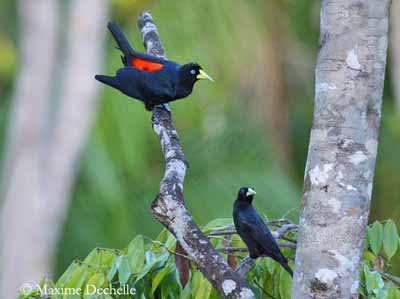
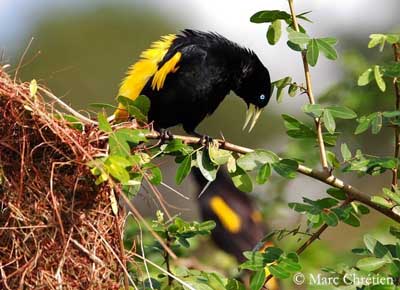
After the display, some oropendolas such as Crested and Green Oropendolas (Psarocolius decumanus and Psarocolius viridis)beat their wings with an audible flapping noise.

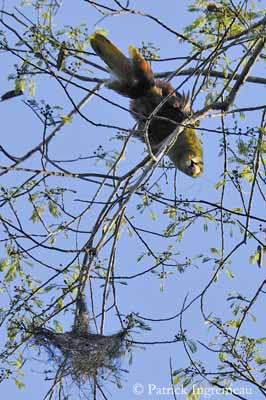
Meadowlarks and the Bobolink perform mostly aerial displays with something like the “song-spread” and the “bow” displays, in order to secure the territory and to attract a female. Only males give them, accompanied by songs.

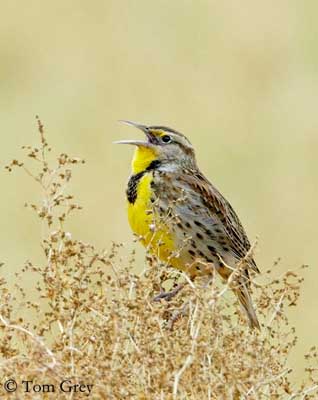
The flight displays are more common in open grassland species. The male flies up with fluttering wing beats and then, it descends by parachute-flight to the ground while singing.
According to the species, some of them sing during the fluttering flight, whereas others sing during the entire flight display.
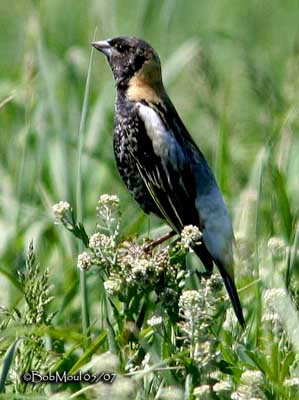
Other display like the “bill tilt”, with sleek body plumage and bill pointed upwards is performed by several Icterids. This display is aggressive and usually occurs when the birds are feeding together, even in mixed blackbirds’ species.
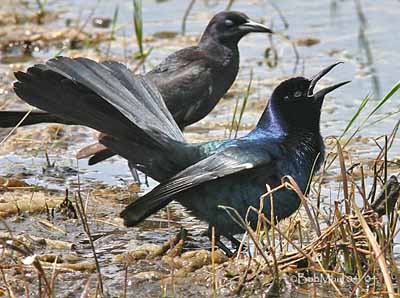
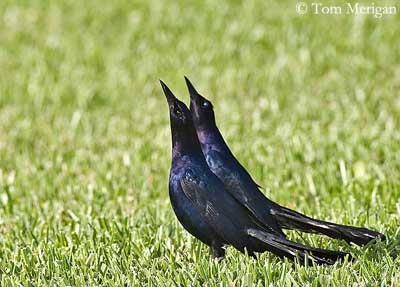
Some species nest in colonies, others are solitary nesters. Nest shapes are variable, and they often are placed on or near the ground in terrestrial species. The forms vary from cup-shaped to woven hanging baskets.
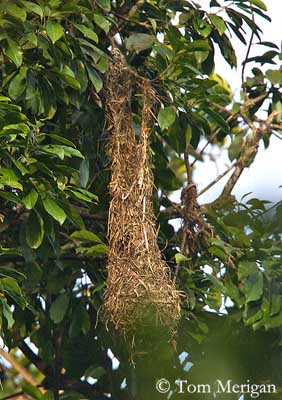

Several orioles and some colonial oropendolas and caciques establish the colony in an isolated large tree. The nests of these birds are hanging baskets, made with weaved plants and attached to the vegetation by the rims or the sides.
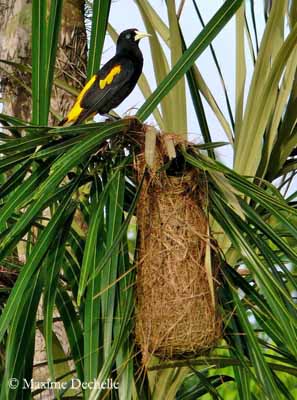
The colony provides more protection against predators. Some “guards” are always watching for avian intruders such as raptors, and drive them away from the nests.
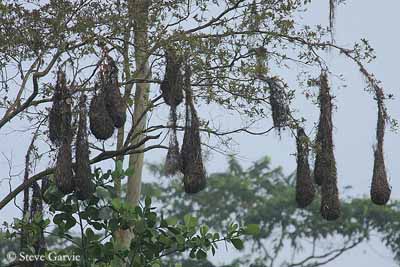
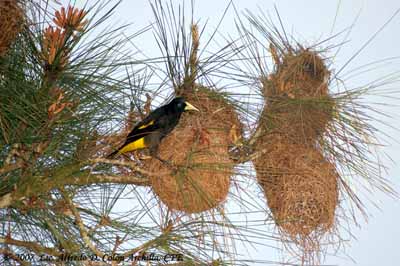
Blackbirds are less colonial nesters and build bulky cup-shaped nests, often in wet areas, usually at low height in vegetation.
The clutches vary from 4-6 eggs in temperate regions, to 2-3 in tropical areas. Eggs are whitish to pale blue with brown and black markings. Incubation lasts about 12-15 days. The nesting period varies from 10 days for the smallest species, to some weeks for the largest.
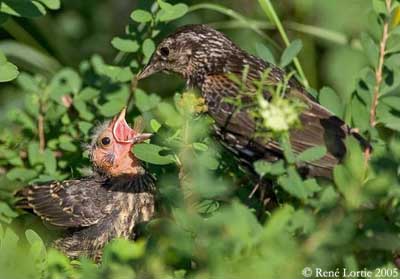
Numerous species perform some migration after the breeding season. They leave their wet and grassy areas and reach more cultivated fields, often in large flocks.

Usually, the northernmost species migrate southwards in winter, from North America to Florida, central and South America.
According to their breeding areas, the birds reach more temperate regions for wintering, and perform some dispersion according to the food resources.
Some species, especially the cowbirds, are parasitic species. Females lay their eggs in other nest’s species. The hosts (often smaller songbirds) rear the young cowbirds, often to the detriment of their own chicks. Many host species accept the cowbird’s eggs, but other species can distinguish them, and as they eject cowbird eggs, or they abandon their nest.
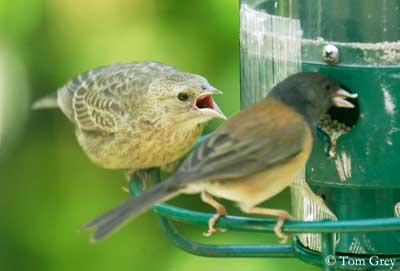
Icterids are relatively common in suitable habitat. The main threats are deforestation for the arboreal species and drainage of wetlands for the species living in wet areas. However, Icterids frequent a wide range of habitats, and they may adapt to the changes, and the spread of agriculture provides food for these birds.
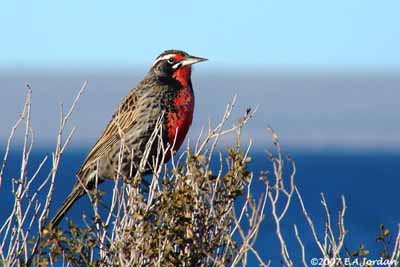

Icterids are well studied birds, because they are common, with several types of behaviours and mating systems including territorial and non-territorial breeding patterns.
From the polygamous species such as the Yellow-headed Blackbird (Xanthocephalus xanthocephalus) and the Red-winged Blackbird (Agelaius phoeniceus), to the harem-defence polygyny* and hierarchy in the Montezuma Oropendola (Psarocolius montezuma), there are numerous interesting behaviours to learn.
*(Harem-defence polygyny is a mating system where the male gathers several females in a small group. This system allows the females to get protection from the male, and the male to have permanent access to these females).
Enjoy their bright coloured plumages and their beautiful displays!
Text by Nicole Bouglouan
Photographers:
Alfredo Colón
Puerto Rico Wildlife
Chrétien Marc
MURINUS
Dechelle Maxime
LEPAPARRAZO
Garvie Steve
RAINBIRDER Photo galleries
Grey Tom
Tom Grey's Bird Pictures
Patrick Ingremeau
TAMANDUA
Jordan Eduardo Andrés
MIS AVES - AVES DE ARGENTINA
Lortie René
http://rlortie.ca/
Merigan Tom
Tom Merigan’s Photo Galleries
Moul Bob
Nature Photography
Philippe et Aline Wolfer
GALERIE
Sources:
NEW WORLD BLACKBIRDS – THE ICTERIDS by Alvaro Jaramillo and Peter Burke – Helm - ISBN : 0713643331
A GUIDE TO THE BIRDS OF MEXICO AND NORTHERN CENTRAL AMERICA by Steve N. G. Howell, Sophie Webb - Oxford University Press - ISBN: 0198540124
BIRDS OF THE GREAT BASIN – by Fred A. Ryser - Univ of Nevada Pr -ISBN: 0874170796
L’ENCYCLOPEDIE MONDIALE DES OISEAUX - Dr Christopher M. Perrins - BORDAS - ISBN: 2040185607
CREAGUS@Monterey Bay (Don Roberson)
Wikipedia (Wikipedia, The Free Encyclopedia)
Juvenile fed by a Junco